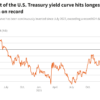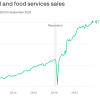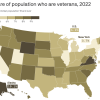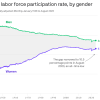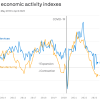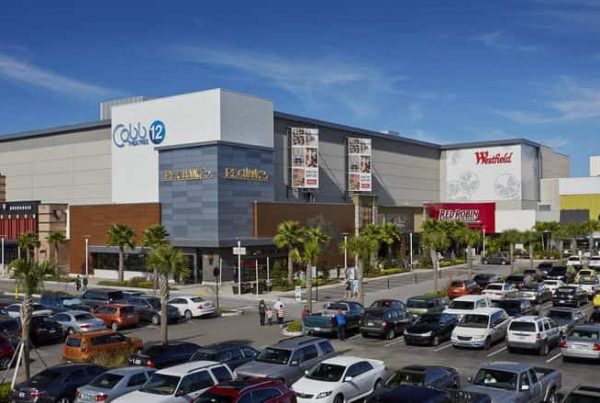How will the disruptive forces of today change the built environment tomorrow?
Take the trend toward health, wellness, beauty and fitness (HWBF). When The Sembler Company, one of the most prolific retail developers, reviewed portfolio-wide tenancy data for the past six years, it learned that traditional retailers were being replaced by HBWF tenants. These were not small changes: Sembler’s super-regional and big-box power centers delivered in 2015 saw a 15 percent increase in HWBF tenants; the jump was even bigger for the company’s grocery-anchored centers, which saw a 33 percent increase over traditional categories.
You can bet Sembler is thinking harder about the implications of this trend.
Sometimes clues to the future can be found in the present-day marketplace. In Cumming, Ga., one of the key traffic-drivers at The Collection at Forsyth is a 20,000-square-foot pediatric outpatient center by Children’s Healthcare of Atlanta. This tenant is perfectly paired with the health-and-wellness trend, and, in fact, at least 12 tenants at the Collection—everything from Academy Sports + Outdoors, to GNC, to CVS, to Studio Lotus—fall into the HWBF category. Meanwhile, at a cost of up to $65 million, Shands Jacksonville has built UF Health North, a large outpatient facility directly across from River City Marketplace, a Jacksonville shopping center owned by Ramco-Gershenson Property Trust. The new medical center has 80,000-square-feet of medical office and 110,000 square feet of outpatient care. It has been so successful Shands is now expanding it into a full-scale hospital by adding 92 inpatient beds.
In Orlando, a new Florida Hospital outpost is now under construction across the street from DDR’s Winter Garden Village, a 1.2 million-square-foot retail center developed by Sembler. Among the tenants at Los Altos MarketCenter in Long Beach, Calif., is an urgent care center/medical office complex occupying 30,000 square feet on two floors.
While “doc in the box”-type urgent care centers have been taking shopping center space for years now, the properties above illustrate the potential for something more significant—namely, hospitals and outpatient centers as the new anchors.
Rather than simply passively observing this trend, how can leaders in retail real estate leverage it in ways that offer maximum strategic advantage?
The opportunities here include selling acres of land to one of these users a ‘la Target or Wal-Mart, or simply co-locating synergistically with them to drive traffic. These days, hospitals are moving closer to the suburban populations they serve rather than sticking to downtowns. In order to efficiently transfer more acute patients, however, they often need to be within 10 or 15 miles of the city center. This puts hundreds of regional power centers right in the sweet spot.
Today’s healthcare systems are also trying to brand themselves as holistic. Retail landlords can make it easy for them to co-locate with spin and yoga studios, CrossFit boxes, national pharmacies, organic salad bars—you name it. It’s a natural fit, in part because outpatient medical centers are 9-to-5 operators; they shut down right when theaters, restaurants and other entertainment spaces are busiest.
When it comes to maximizing HWBF, it helps to weigh the potential effects of related retail shifts like the “flight to quality” in food. Morgan Stanley Research now forecasts that natural/organic, already the fastest-growing major food segment, will grow at a 10% annual rate through 2020. If that happens, this segment would reach $100 billion in retail sales by 2019 and $110 billion by 2020.
Traditionally, Americans have considered natural/organic to be synonymous with premium pricing. But with this segment going mainstream so fast, you have to wonder whether price insensitivity in natural/organic can hold for much longer.
In the mall world, athleisure concept Fabletics aims to undercut Lululemon and Athleta by selling yoga pants and workout clothes at lower price points. My guess is that, in coming years, new brands will shake up the HWBF category by offering a more enticing blend of quality and value. Some will start as local brick-and-mortar operators; others will begin online and move to physical locations.
These changes could shift how all of us “expect” centers to look in five years or more. Given the momentum of HWBF, will it really be enough to collocate major medical centers—places where patients are being warned about obesity, inactivity, poor nutrition and the like—with chicken-wing chains and “slab” ice cream franchises? Wouldn’t these centers perform better with tenant mixes that fit the ethos of HWBF?
Rethink projects and tenant mixes now rather than scramble to adapt when it’s too late. Tens of millions of people—baby boomers, Gen Xers and Millennials among them—are laser-focused on being healthy, well and fit. Who will give them what they want where they want it?


